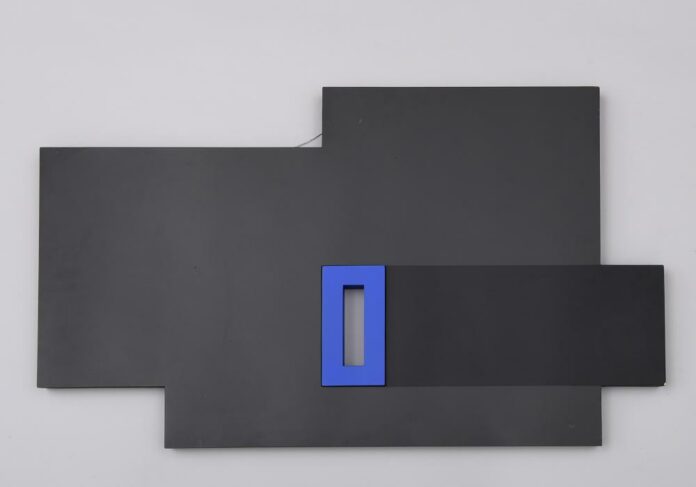Concretism Art: the Beauty of Pure Forms, Lines and Colors
Concretism, an influential art movement that emerged in the 20th century, celebrates the purity of form and color in its most elemental state. As a response to the chaos and uncertainties of the post-war world, Concretism sought to create artworks that were free from representational or narrative content, focusing solely on the essential elements of visual art.
Inspired by geometric abstraction and the principles of constructivism, Concretism artists embraced a rigorous approach to composition, utilizing geometric shapes, lines, and colors with precision and clarity. Their creations were characterized by strict adherence to mathematical principles, often resulting in artworks that appeared harmonious and balanced to the eye.
One of the key tenets of Concretism was the rejection of illusionism and the desire to present the viewer with a pure visual experience. By eliminating any references to the external world, Concretism aimed to evoke a sense of universality and timelessness, inviting the viewer to engage with the artwork on a purely visual and emotional level.
Artists within the Concretism movement sought to explore the interplay of colors, shapes, and forms, using them as the primary means of expression. Through precise arrangement and juxtaposition, they created vibrant and dynamic compositions that conveyed a sense of rhythm and movement.
One of the pioneers of Concretism was Theo van Doesburg, who co-founded the influential De Stijl movement. Van Doesburg’s work exemplified the movement’s principles of geometric abstraction and pure color. Other notable artists associated with Concretism include Max Bill, Josef Albers, and Camille Graeser, among others.
Concretism’s impact extended beyond traditional painting to encompass other forms of artistic expression, such as sculpture, architecture, and graphic design. Its influence can still be seen in contemporary art and design, where the celebration of pure form and color continues to resonate with artists and viewers alike.
Concretism art remains a fascinating exploration of the inherent beauty found in pure form and color. By stripping away representational content, Concretism artists invited viewers to embark on a journey of visual discovery and emotional resonance. The movement’s commitment to precision and universal expression continues to inspire artists to this day, celebrating the enduring power of geometric abstraction and the allure of pure visual harmony.
Concretism art is characterized by several distinct features that set it apart as a significant movement in the realm of abstract art. These characteristics include:
- Geometric Abstraction: Concretism art is grounded in geometric abstraction, where artists employ simple and precise geometric shapes such as squares, circles, triangles, and rectangles as the fundamental building blocks of their compositions. These shapes are often used in a precise and systematic manner, adhering to mathematical principles.
- Non-Representational: Concretism artworks are non-representational, meaning they do not seek to depict recognizable objects or subjects from the external world. Instead, they focus on pure form, color, and the relationships between geometric elements to create a visual experience divorced from figurative references.
- Rational and Logical: Concretism artists approach their work with a sense of rationality and logic. The compositions are meticulously planned and executed, adhering to mathematical precision and orderly arrangements. The art is often the result of a rigorous and intellectual process.
- Flat and Clean Surfaces: Concretism art typically features flat and clean surfaces, devoid of texture or visible brushstrokes. This emphasis on smooth and non-textured surfaces contributes to the purity and objectivity of the artwork.
- Primary Colors: Concretism artists often employ a restricted palette of primary colors (red, blue, and yellow) along with black and white. These colors are used in their pure form, without mixing or shading, to create bold and visually striking compositions.
- Emphasis on Objectivity: Concretism seeks to present the viewer with an objective visual experience, devoid of emotional or narrative content. The artworks aim to engage the viewer’s intellect and perception, encouraging them to contemplate the pure elements of form and color.
- Universality and Timelessness: By eliminating representational elements and focusing on geometric abstraction, Concretism art aspires to achieve universality and timelessness. The artworks are intended to transcend specific cultural or historical contexts, resonating with viewers across different times and places.
- Relationship with Constructivism: Concretism art shares connections with the Constructivist movement, which also emphasized geometric abstraction and objectivity. However, Concretism developed as a response to the strict formalism of Constructivism, seeking to introduce a more intuitive and expressive approach to abstraction.
Concretism art is defined by its commitment to geometric abstraction, non-representational forms, rationality, and objectivity. Through the precision and harmony of its compositions, Concretism invites viewers to explore the intrinsic beauty of form and color, celebrating the essence of visual art.














… [Trackback]
[…] Read More here: artmiamimagazine.com/concretism-art-the-beauty-of-pure-form-and-color/ […]